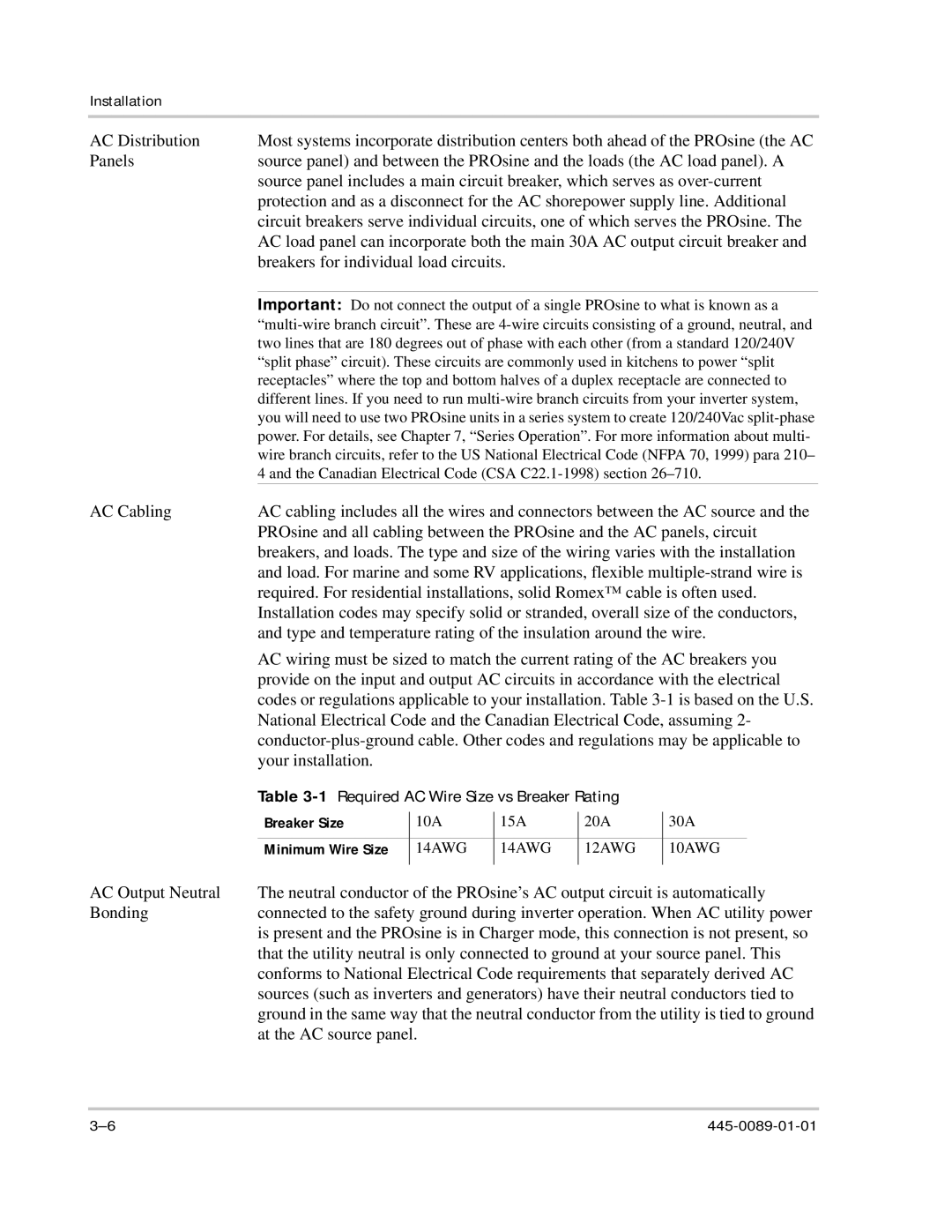
Installation
AC Distribution | Most systems incorporate distribution centers both ahead of the PROsine (the AC |
Panels | source panel) and between the PROsine and the loads (the AC load panel). A |
| source panel includes a main circuit breaker, which serves as |
| protection and as a disconnect for the AC shorepower supply line. Additional |
| circuit breakers serve individual circuits, one of which serves the PROsine. The |
| AC load panel can incorporate both the main 30A AC output circuit breaker and |
| breakers for individual load circuits. |
|
|
| Important: Do not connect the output of a single PROsine to what is known as a |
| |
| two lines that are 180 degrees out of phase with each other (from a standard 120/240V |
| “split phase” circuit). These circuits are commonly used in kitchens to power “split |
| receptacles” where the top and bottom halves of a duplex receptacle are connected to |
| different lines. If you need to run |
| you will need to use two PROsine units in a series system to create 120/240Vac |
| power. For details, see Chapter 7, “Series Operation”. For more information about multi- |
| wire branch circuits, refer to the US National Electrical Code (NFPA 70, 1999) para 210– |
| 4 and the Canadian Electrical Code (CSA |
AC Cabling | AC cabling includes all the wires and connectors between the AC source and the |
| PROsine and all cabling between the PROsine and the AC panels, circuit |
| breakers, and loads. The type and size of the wiring varies with the installation |
| and load. For marine and some RV applications, flexible |
| required. For residential installations, solid Romex™ cable is often used. |
| Installation codes may specify solid or stranded, overall size of the conductors, |
| and type and temperature rating of the insulation around the wire. |
| AC wiring must be sized to match the current rating of the AC breakers you |
| provide on the input and output AC circuits in accordance with the electrical |
| codes or regulations applicable to your installation. Table |
| National Electrical Code and the Canadian Electrical Code, assuming 2- |
| |
| your installation. |
Table 3-1 Required AC Wire Size vs Breaker Rating
| Breaker Size | 10A | 15A | 20A | 30A | |
| Minimum Wire Size | 14AWG | 14AWG | 12AWG | 10AWG |
|
|
|
|
|
|
|
|
AC Output Neutral | The neutral conductor of the PROsine’s AC output circuit is automatically | |||||
Bonding | connected to the safety ground during inverter operation. When AC utility power | |||||
| is present and the PROsine is in Charger mode, this connection is not present, so | |||||
that the utility neutral is only connected to ground at your source panel. This conforms to National Electrical Code requirements that separately derived AC sources (such as inverters and generators) have their neutral conductors tied to ground in the same way that the neutral conductor from the utility is tied to ground at the AC source panel.
